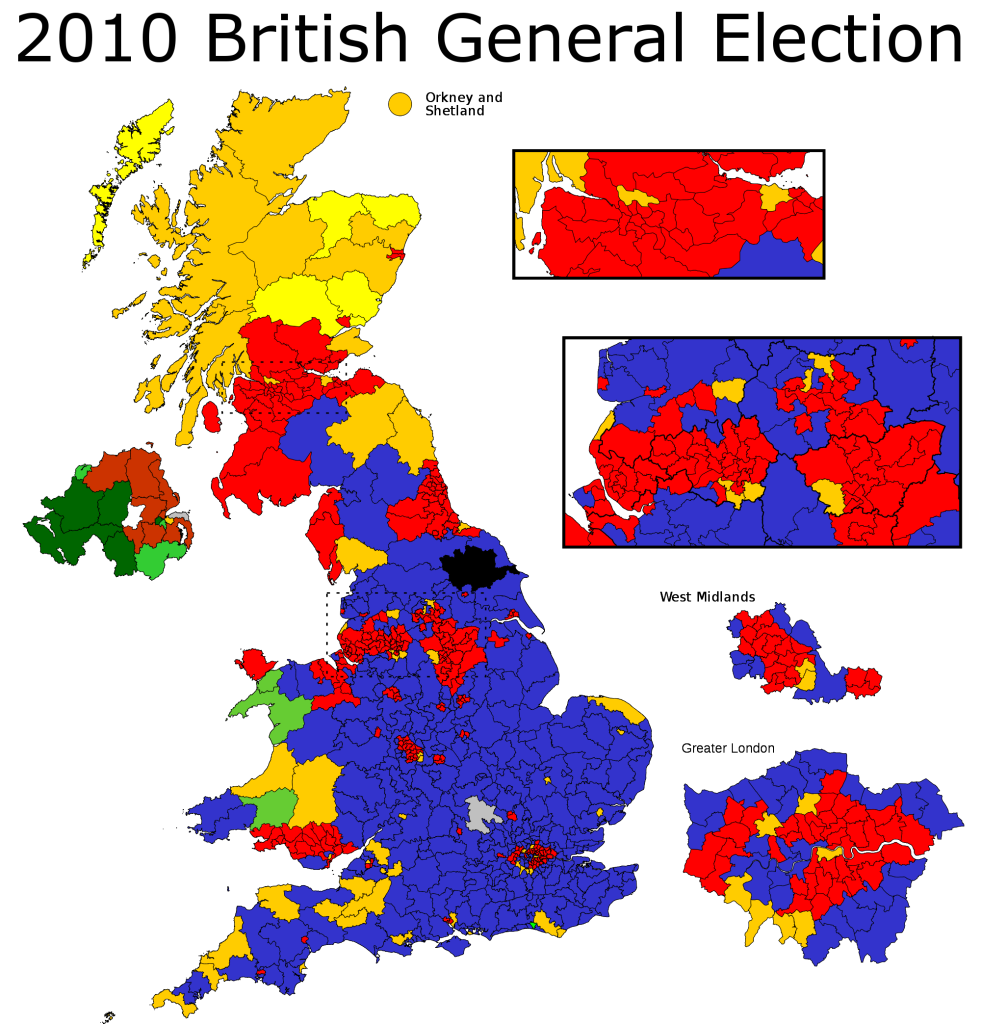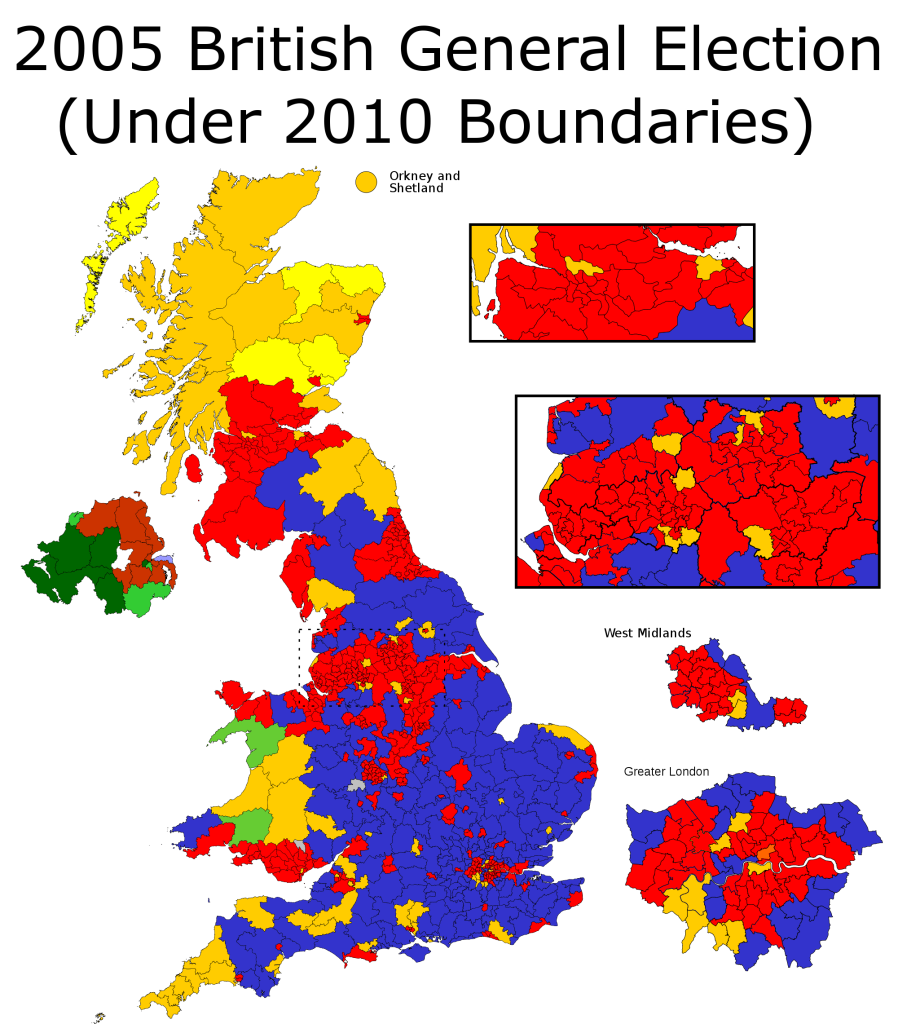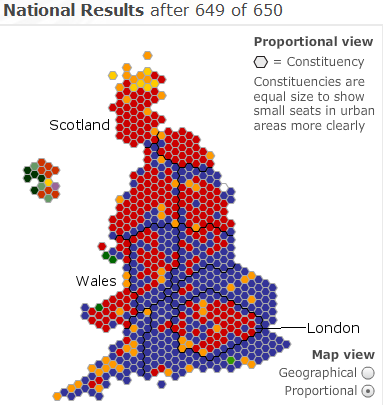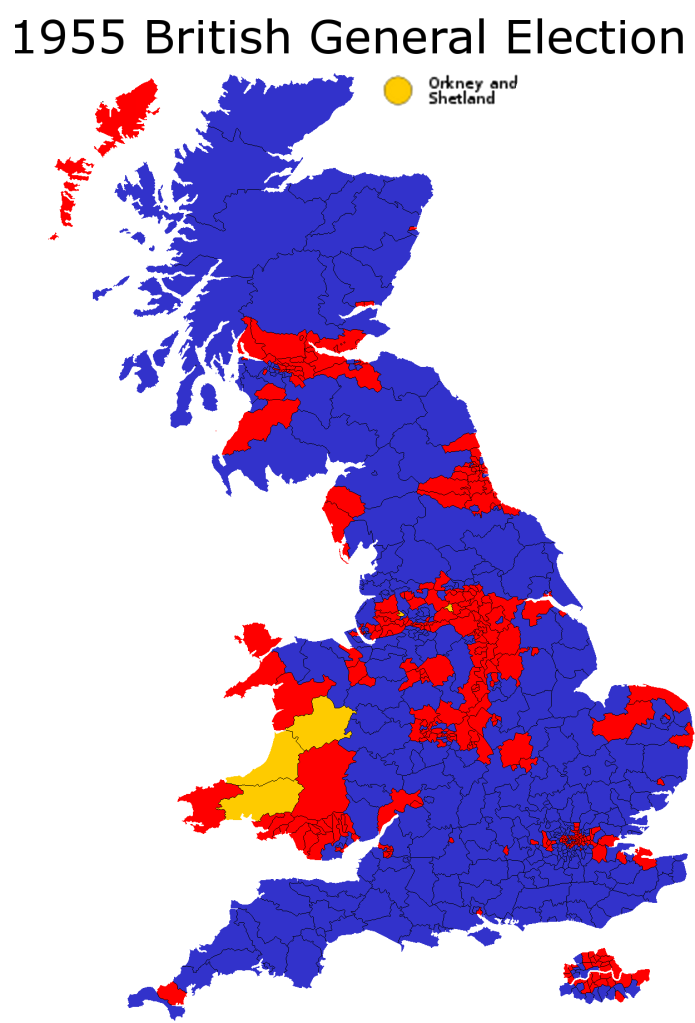Welcome all once again to StephenCLE’s predictions, these being the Senate variety. Last time, we went through the first third of the Senate seats up for grabs this cycle. Those seats included competitive races throughout the Eastern US, such as Florida, Pennsylvania, Delaware, North Carolina, and New Hampshire. Today, we head to the region that will more or less determine the balance of power in the Senate this election cycle, the Central US.
Current National Score – Republicans +.5
Current Seat Changes:
1.Delaware – Republican pickup
2.Florida – Independent pickup
Before We Begin –
I feel the need to bring up the Pennsylvania Senate race I covered last week, where I had Arlen Specter running away from Pat Toomey in the end. Well, it now appears that Joe Sestak is going to defeat him in the primary. As a result, I am now moving the race to Toss Up status, but it is still a democratic retention. I just think Toomey is way too conservative for the state, which is much more blue now than when Rick Santorum was elected.
Eastern Great Lakes –
Ohio – Open (Republican) – Ohio is always a contested, swing state. An uncontested race here usually means a landslide for one party or the other. Strangely, despite the Republicans doing well nationally, they are struggling here. Part of that is because GOP candidate Rob Portman isn’t catching on with voters. Now that could be because of lack of name recognition, but it’s more likely that his reputation as a free trading, anti-government type isn’t well suited to the state. His base is very energized though, as evidenced by his crazy strong fundraising. Conversely, the democratic candidate, Lee Fisher, has a bit of a problem as far as his base is concerned. Voters just aren’t enthused by his candidacy. Despite outspending primary opponent Jennifer Brunner 10-1, he badly underperformed pre-election polls and won by a high single digit margin. I think that in many ways, this race is tied heavily to the other big race in Ohio this cycle, the gubernatorial contest between Ted Strickland and John Kasich, because Portman/Kasich are practically the same candidate, as Strickland/Fisher are tied at the hip in the governor’s mansion. Flat out, I don’t see Kasich beating Strickland. There won’t be a lot of crossover voting in this race, so if Strickland wins by more than 5%, I think that’s enough to pull Fisher over the finish line. Fisher’s going to need coattails from somewhere to drive up Dem turnout, something that he has a hard time doing himself. Still, this is arguably the Democrats’ best shot at a pickup, and I think by a miniscule margin they get it done.
State PVI – R+0
Stephen’s Rating – Toss Up
Prediction – Weak Dem Pickup (1st overall)
National Score – Democrats +.5
Indiana – Open (Democratic) – Indiana for many years had been a republican bastion, before the Democrats swept to wins in 3 house seats in 2006 before bringing down the house with Obama’s 2008 statewide victory. I’m concerned that the state might be reverting back to it’s former roots, as most polls here have been friendly to the GOP, but again, most have come from Rassmussen and it’s strict likely voter screen. This is a race though, in which the Democrats have the arguably better candidate. Representative Brad Ellsworth is a conservative democrat that should play well outside of the most republican parts of the state. A former sheriff, Ellsworth has the support of law-and-order types, and his conservative stances on guns and certain social issues should be a plus. His republican opponent, former senator Dan Coats, is a relative moderate GOPer that has lots of experience. But he has visible negatives, namely working as a lobbyist. For what it’s worth, lobbyists are probably about as popular as Saddam Hussein these days. This is one race where I don’t think the polls have much bearing right now, since Ellsworth is very little known outside of the 8th district. Still, I think that because of the environment, Coats will barely hold off a hard-charging Ellsworth at the wire.
State PVI – R+6
Stephen’s Rating – Lean Republican
Prediction – Weak Rep Pickup (2nd overall)
National Score – Republicans +.5
Michigan – no election
Western Great Lakes –
Illinois – Open (Democrat) – This race makes my blood boil. First off, the democrats suffered through the Rob Blagojevich scandal which broke when he tried to sell the seat to the highest bidder. Then Roland Burris was put in the seat, he of the $20 fundraising quarter. And then, candidate recruitment here was a category 5 disaster, as the Republicans got the one man that could probably win, Representative Mark Kirk. The Democrats failed to get the one woman that could’ve put the race to bed, attorney general Lisa Madigan. And after all that, the democratic candidate, treasurer Alexi Giannoulias, is struggling with the breakdown of his family’s bank. By all accounts, this race should be hopeless, but Giannoulias is only behind by 4-6 points in most polls. While I think the partisan lean of Illinois could be such that Giannoulias has a shot, I haven’t liked this matchup from the start, and I don’t like it now. Alexi won’t be getting any help from the governor’s race either, so no coattails. In the end, I think Kirk wins fairly handily.
State PVI – D+8
Stephen’s Rating – Lean Republican
Prediction – Moderate Rep Pickup (3rd overall)
National Score – Republicans +1.5
Wisconsin – Russ Feingold (Democrat) – Feingold and the DSCC got a big break when the Republicans’ top candidate, former governor Tommy Thompson, failed to get into the race. Still, I think it’s possible that the race could be competitive if the GOP gets a self-funder. There are several candidates in the field with the ability to do that. A lot of the trajectory of this race will be determined by who gets the GOP nomination. Ultimately I think Feingold will win, but a wary eye never hurt anybody.
State PVI – D+2
Stephen’s Rating – Likely Democrat
Prediction – Strong Dem Hold
Minnesota – No election
Central Plains –
North Dakota – Open (Democrat) – This is the one seat over all others that we KNOW is going to flip in November. Popular governor John Hoeven elected to challenge senator Byron Dorgan back in January, and Dorgan, perhaps sensing the inevitable, dived out of the way. This is a shame because Dorgan was a popular figure at home and in the democratic caucus. But his chances of surviving against Hoeven were very small. Only token opposition will face Hoeven now.
State PVI – R+10
Stephen’s Rating – Solid Republican
Prediction – Solid Rep Pickup (4th overall)
National Score – Republicans +2.5
South Dakota – John Thune (Republican) – No democrat filed to run against John Thune, so he will skate by uncontested. Blah.
State PVI – R+9
Stephen’s Rating – Solid Republican
Prediction – Solid Rep Hold
Nebraska – No election
Iowa – Chuck Grassley (Republican) – Now this is a race that not many people saw coming. Grassley has been an institution in the Hawkeye State for many years, and usually wins big. But it appears that he erred during the health care debate by doing all he could to try to kill the bill. Iowa democrats have now turned against Grassley as a result and have coalesced behind a stronger than expected candidate, Roxanne Conlin. Current polling shows that Grassley’s lead is down to about 10-13 points, still a nice cushion but hardly impossible for an opponent to make up. Ultimately I think Conlin can make things interesting, but she will need to fight hard and hope for an unforced error from Grassley to win.
State PVI – D+1
Stephen’s Rating – Likely Republican
Prediction – Strong Rep Hold
Missouri – Open (Republican) – Missouri is usually a hotly contested state, and that will be the case again this year as Kit Bond’s Senate seat is up for grabs. This race is intriguing because the state appears to be moving slightly to the right, and the national environment should put Missouri into the red column this year. The problem is, the Democrats came up with a very solid candidate in secretary of state Robin Carnahan, who hails from a prominent political family. The Republican candidate is 7th district representative Roy Blunt, who is definitely NOT the #1 guy for the GOP here. Most public polls have had this race very close, except for Rasmussen, who shows Blunt up 6-8. Curiously, most other public polling has shut off over the last two months, so we don’t have any corroborating evidence. Bottom line though, I refuse to believe that an incumbenty-establishmenty type like Roy Blunt is pulling away from Robin Carnahan. This is a race that I think is a great pickup opportunity for the Democrats, and if Carnahan campaigns well in the fall, unless the national environment has reached defcon 5, they’ll get it.
State PVI – R+3
Stephen’s Rating – Toss Up
Prediction – Weak Dem Pickup (2nd overall)
National Score – Republicans +1.5
Arkansas – Blanche Lincoln (Democrat) – Here’s a formerly democratic state that has turned republican red in a hurry at the federal level. And worse yet for Team Blue, Blanche Lincoln really killed her favorables during the health care debate by flip-flopping at every turn in the road. Like Chuck Grassley, Mary Landrieu, and Ben Nelson, she became one of the prominent figures that received the national scorn. Even 2nd tier republicans were beating her, and that was before 3rd district representative John Boozman jumped into the race. Lt. Governor Bill Halter is primarying Lincoln from the left, and has a chance to knock her off. His chances in the general election are marginally better than Lincoln’s but still bad. Ultimately, I’ve pretty much written this seat off barring an unforced error from Boozman, who’s way up in his primary battle for the GOP nomination.
State PVI – R+8
Stephen’s Rating – Likely Republican
Prediction – Strong Rep Pickup (5th overall)
National Score – Republicans +2.5
Kansas – Open (Republican) – Kansas is a solidly republican state, and usually the game boils down to the GOP primary. The Democrats did have one chance to flip the seat, as governor Kathleen Sebelius could have jumped into the race, but Barack Obama made her secretary of Health and Human Services, taking her out of the race. Now it’s a battle between representatives Jerry Moran and Todd Tiahrt to see who will cruise to victory in November.
State PVI – R+12
Stephen’s Rating – Solid Republican
Prediction – Solid Rep Hold
Oklahoma – Tom Coburn (Republican) – Oklahoma was the reddest state in the nation in 2008, and the Senate race here was never really a question. I suppose maybe, that governor Brad Henry could have run for the seat, which would have made things at least mildly competitive, but even with him in the race a victory would be very unlikely. Instead, I don’t think Coburn has any competition at all.
State PVI – R+17
Stephen’s Rating – Solid Republican
Prediction – Solid Rep Hold
Deep South Gulf –
Alabama – Richard Shelby (Republican) – Here’s another race that won’t even be a contest. Alabama is about as red a state as you’ll find these days.
State PVI – R+14
Stephen’s Rating – Solid Republican
Prediction – Solid Rep Hold
Mississippi – no election
Louisiana – David Vitter (Republican) – Personally, this is a race that pisses me off. Louisianans should be running to the polls in droves to vote out David Vitter, who’s a gigantic jerk for his ethical transgressions. But apparently being a good, moral human being matters much less than being a conservative republicans, as not only is Vitter beating up on his democratic opponent, Charlie Melancon, he’s actually got positive favorables for the most part. Meanwhile, Melancon’s favorables are underwater. Why? Because he’s a demmy-crat, apparently. I’m not totally writing this off because Vitter’s lead is still only about 10-15 in most polls, but I fail to really see a path to victory for Melancon in a state that is just being bass-ackward and stupid when it comes to this election. Yeah, I went there.
State PVI – R+8
Stephen’s Rating – Likely Republican
Prediction – Strong Rep Hold
Texas – no election
Recap – There’s a lot of upheaval in this region of the country. I have the Republicans picking up 4 seats, Indiana, Illinois, North Dakota, and Arkansas. The Democrats counter by picking up 2 seats of their own, Ohio and Missouri. That leaves the national score so far at 5 Republican pickups, 2 for the Democrats, and 1 for the Independents, composite score of Republicans +2.5.
In the final section of the Senate baseline predictions, we head to the western third of the country, where we have potential R pickups in Colorado and Nevada, a very indecisive Repub-man in Washington, a competitive race in California, and some teabagger induced desert warfare in Arizona. You won’t want to miss it.



